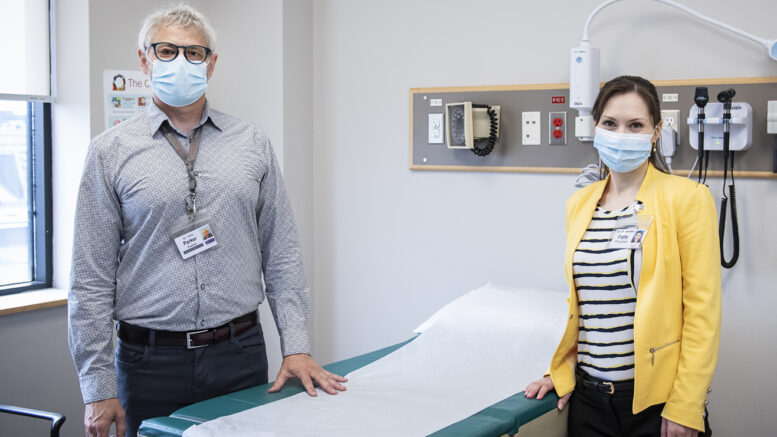Adam Prudhomme
Editor
Data from Lennox and Addington County General Hospital’s Lung Diagnostic Assessment Program (LDAP) shows suspected lung cancer patients are benefitting from a 19 day reduction in diagnosis wait time.
Earlier test results are leading to better outcomes and represent a buck in the trend of rural communities experiencing barriers to equitable long care, as opposed to those living in larger centres.
The Napanee clinic was launched in November 2021as a satellite operation of Kingston Health Sciences Centre.
“We launched an outreach clinic for our Lung Diagnostic Assessment Program, which is a rapid assessment clinic that helps to expedite the evaluation and coordination of care for patients who are undergoing workup for suspected lung cancer,” said Dr. Geneviève Digby, respirologist and clinical lead for the LDAP. “We took the model of care that worked to streamline at Kingston Health Sciences Centre and brought it to the community hospital in a kind of mirrored program that could deliver the same standard of care at a community centre closer to where patients live, with the goal of bringing care closer to home.”
The LDAP allows doctors to accurately pinpoint a cause for concern following an initial CT scan.
“Patients come to see us when they have an abnormal finding on usually a CT scan of the chest and they’re usually undergoing imaging for either symptoms or because of a finding on another type of scan,” said Digby. “Once there’s a CT scan demonstrating a suspicion of lung cancer, they get referred to us to go through the diagnostic phase of the workup which involves coordinating other tests for staging purposes and diagnostic biopsies and then we coordinate follow up care with the right specialists who can treat the lung cancer.”
Now that the program has become fully established, the numbers are positive.
“The first year of that clinic being up and running in Napanee, we able to see a total of 121 patients over that time frame in the Napanee outreach clinic,” said Digby. “Those were for patients who lived in Napanee or further west to help reduce their travel distance so they wouldn’t have to come all the way to Kingston. In doing so, we able to reduce the amount of travel for patients from where they lived to their care appointment by almost 9,000 km. That’s an average of about 73 km per patient. That’s saving time, distance travelled. Gas is expensive, mileage on cars is expensive and that’s money out of pocket saved for patients.”
Treatment closer to home also gives patients one less thing to worry about as they focus on their battle with cancer.
“It helps some to alleviate some of the stress that comes with seeking care. In some of our research in the region, we found that patients who received care in our LDAP program experienced better lung cancer survival outcomes,” said Digby. “One of the main barriers to actually being seen in our program is how far away patients live, with the further away people live from our program, the less likely they are to be seen by our program. We’re hoping that by bringing the program to the community, we have removed one of those geographic barriers to care and hopefully serve more patients in the community.”
Faster diagnosis also leads to earlier treatment, another huge factor in whether or not a patient has a successful outcome.
Digby says the data shows the program is working and hopes to not only expand the Napanee clinic’s capacity, but also that other smaller community hospitals will see the success of Napanee and adopt a similar program.
Not only are they producing tangible results in the number of patients seen, but in the bigger picture they’re also doing their part to help reduce the number of toxins in the air, ultimately leading to fewer instances of lung cancer.
“We were able to estimate the total carbon dioxide emissions saved from patients not having to drive as far and in an era where we recognize that health care has a large impact on climate change, we are aware of our responsibility in terms of trying to ensure efficient care, resource mindful care and reducing our impact on climate change. This is just another benefit to providing care closer to home,” added Digby.

